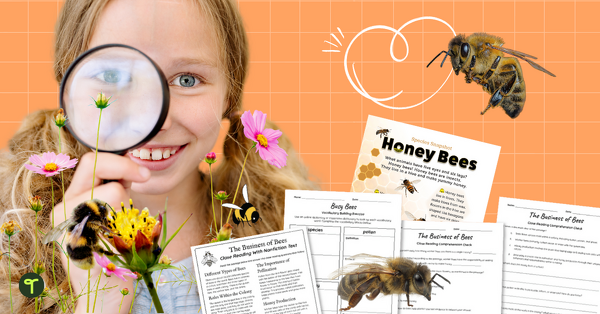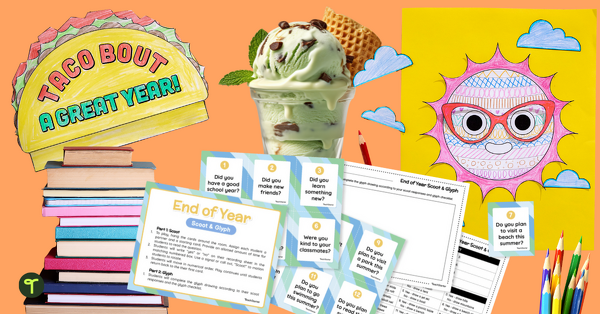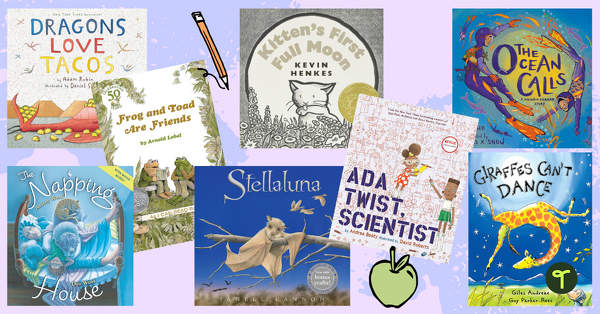Learning new things can be hard whether you’re a grown-up or a little kid, but if you’re looking for a new way to inspire students to problem solve, have you considered adding growth mindset strategies to your teacher toolbox? This method of teaching students to persevere in spite of setbacks has taken classrooms by storm, and it’s one the teachers on the Teach Starter team have seen work in our own classrooms.
Curious about changing your students’ mindsets? Read on to learn some common sense strategies you can use in the classroom.
Want to skip ahead to putting the whole thing to work in your classroom? Explore our favorite teacher-created growth mindset resources!
How to Develop a Growth Mindset in Students
By now you’ve probably heard “I can’t” or “This is too hard” in your classroom often enough that if you were given a penny each time you’d be able to buy a small island. Frustration is tough, especially when you’re a small person who doesn’t feel they have a lot of control in life.
Translating Dweck’s work into the classroom, a growth mindset can help both struggling learners and students who might be termed gifted, as the goal is to close the achievement gap and create a healthier, more equitable classroom. Students who have a growth mindset believe they can grow and develop their knowledge and understanding — it’s a marathon, not a sprint!
But how do you develop a growth mindset in students in your classroom? Let’s take a look at some growth mindset strategies that you can try with your students!
Growth Mindset Strategies
1. Don’t Grade Every Single Assignment
Let kids know that assignments in the early part of a lesson are low stakes and meant to help them learn rather than about a particular end goal (aka a number or letter at the top of the page). This sets your students up to be better able to handle stumbles along the path to mastering a concept.
2. Grade for Learning
When you do assign grades, avoid doing so based on compliance to due dates or formatting. Instead, focus your grades on the actual understanding of the task at hand.
Download a free positive self talk poster for your classroom!
3. Teach Students to Value Their Differences
This gives your students a chance to consider how their minds work and provides an understanding that we all work a little differently — and that’s not just OK, it’s something to value. This fun growth mindset activity was inspired by scientist Stephen Hawking. After reading about Hawking, students create a self-portrait inspired by the limitless nature of the human mind.
4. Teach Students Growth Vocabulary
Terms like “I can’t” and “I don’t know how” are readily known by most students. But “not yet” and “I’ll try” are squishier concepts and terms that are incredibly powerful. So make it a habit of adding “yet” when a student says they can’t do something — “You can’t answer that problem, yet.”
Our Captain Yet resource pack is aimed at arming elementary schoolers with yet and other words they need to practice a growth mindset in the classroom. Even better? With goal setting and tracking templates, posters, displays, worksheets, games, and activities all focused around the adventures of a Captain Yet and his pal Pirate Nope, the concepts are actually really, really fun (we mean it!).
The characters Captain Yet and Pirate Nope are great role models for students due to the supportive nature of their friendship. Pirate Nope often feels as though he can’t overcome many of his learning challenges. Captain Yet is a fantastic friend and helps Pirate Nope see that through resilience and problem-solving, every challenge has a solution.
5. Use Anchor Charts
Working with your students to create anchor charts that anchor the lesson, then posting them in the classroom helps to teach your students that it’s OK to have to go back to a resource for reminders. In fact, it’s something you encourage they do!
6. Be Careful With Your Own Language
Role model growth mindset language as much as possible. For example, when students complain that they’re struggling at a particular concept, remind them that that’s OK because each new problem they encounter is helping them develop those learning muscles.
In private, away from the students, try also to reframe your own take on vocabulary. Grades and students aren’t “bad” or “good”! There’s always room to grow!
7. Set Achievable Goals
As adults we often set goals that are too lofty and leave us feeling deflated when we can’t hit them, so how can we expect young children to do any better? Work with your students on learning the language of “I can …” and “I can’t yet …” to help them learn to create achievable goals and get used to working toward something rather than expecting mastery from day one.
We even made I Can! and I Can’t Yet … handwriting worksheets so your students can practice writing and goal-setting at the same time! There are four different worksheets so your students can complete a new one each 9-weeks to keep their growth mindset fresh.
8. Set Up a Growth Mindset Bulletin Board
Along with anchor charts, a bulletin board that provides the language of a growth mindset that’s set up where students see it daily will help reinforce that failure is part of growing and moving forward. Give your students a visual reminder of the growth mindset vocabulary you’ve taught them, so they can practice using it each and every day!
9. Avoid Over-Praising Intelligence
We want to build students up, of course, but instead of telling a student how smart they are, how about praising how persistent they were in overcoming hurdles along the way to completing a task?
10. Provide Challenges
One of the best ways for students to develop a growth mindset is being challenged and seeing that it’s OK to take risks and OK to fail … and that you can dust yourself off and try again! Encourage your students to see each challenge as a step on the learning path.
11. Post Growth Mindset Quotes for Kids on Your Classroom Walls
Seeing growth mindset quotes everywhere they turn is subtle, but it’s hard to forget the words you read several times a day. Explore a host of motivational posters with growth mindset quotes perfect for kids.







Comments